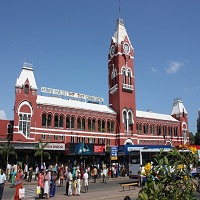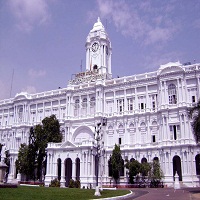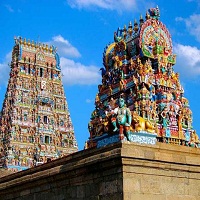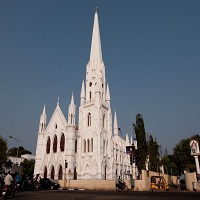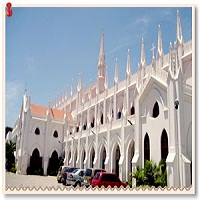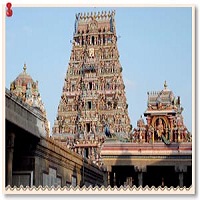Chennai
Formerly known as Madras - The settlement founded around three and half centuries ago owes its genie to Andrew Cogan and Francis Day, who despite pessimism from their company accepted the grant of a irregular rectangular shape of land that was to grow into the seat of British power in India while laying the foundation on which modern India has grown.
Today Madras that is Chennai is a thriving modern metropolis with flourishing industrial suburbs. For all its modern growth Chennai still remains true to much of its fascination historic past
Madras was official renamed to Chennai in the year 1996.
Fort St. George
Founded in 1644, this British Fortress provided the impetus for further settlements and trading activities around Madras and the city of Madras evolved around the fort.
The Fort museum exhibits many items such as weapons, coins, medal and other artefact dating back to Colonial India. The first ever national flag flown after the independence is stored in the 3rd floor. It also displays some paintings of British Governors and British officials.
Inside the fort is the oldest Anglican Church in India - St. Mary's Church. The ancient prayer house solemnized the marriages of Robert Clive and Elihu Yale - who later became the first benefactor of Yale University.
Madras High Court
Established by the patent granted by Her Majesty Queen Victoria, this building complex of Madras High Court is an example of Indo - Saracenic style of architecture. The famous architect Henry Irwin guided the most part of the construction. A reminder of one of the few buildings to be damaged in India during First World War German attack.
Getting inside is restricted due to heightened security now a days.
Other colonial buildings in Chennai
Chennai central railway station built in a combination of Gothic and Romanesque style of architecture
Southern Railway headquarters built for the first time in India in reinforced concrete in a combination of Dravidian and classic styles
University of Chennai and The museum - Indo Saracenic style
St. Andrews church - an example of Georgian church architecture.
The Museum
Known as the Government Museum of Madras Museum, this museum complex built on Indo- Saracenic style is considered to be the second oldest museum in India and is particularly rich in archaeological and numismatic collections. Consisting of forty six galleries displaying a variety of artefacts and objects covering archaeology, numismatics, zoology, natural history, bronze sculptures and Amravati paintings.
The bronze gallery and the Amravati gallery are a must see galleries in this museum .
Kapaleeshwar Temple
Temple built in typical Dravidian architectural style with east and west gopurams over powering the streets are the two main entrances with the east as the main entrance. Though the present temple was built during the Vijaynagar Empire during the 16th Century, references are found that the original temple was built by the Pallavas during 7th century. The temple is situated in the area known as MYLAPORE referred by Ptolemy, a Greek geographer and was apparently a well know sea port.
St. Thomas Cathedral
St. Thomas, one of the twelve disciples of Jesus arrived Tamilakkam and preached from 052 AD to 072 AD and was martyred in 072 AD. Originally built by the Portuguese during the 16th century, the present day church with status of cathedral was built by the British during 1893. Raised to the status of Basillica minor in 1956, it is the national shrine of Catholic of India and an important centres for Christians in India. This is also situated in the famous area of Mylapore.
Armenian Church
Chennai should have housed a small but a thriving population of Armenians who were involved in dealing of fine silk, gems and expensive spices. The church called the Armenian Church of Virgin Mary constructed in 1712 is one of the oldest churches in India and is famous for its belfry of six.
Marina Beach
This sandy beach considered to be the world's second longest natural urban beach runs along Bay of Bengal from north to the south of Chennai city on the eastern end. The western side of the beach is dotted with various historic and stately buildings of the British.
